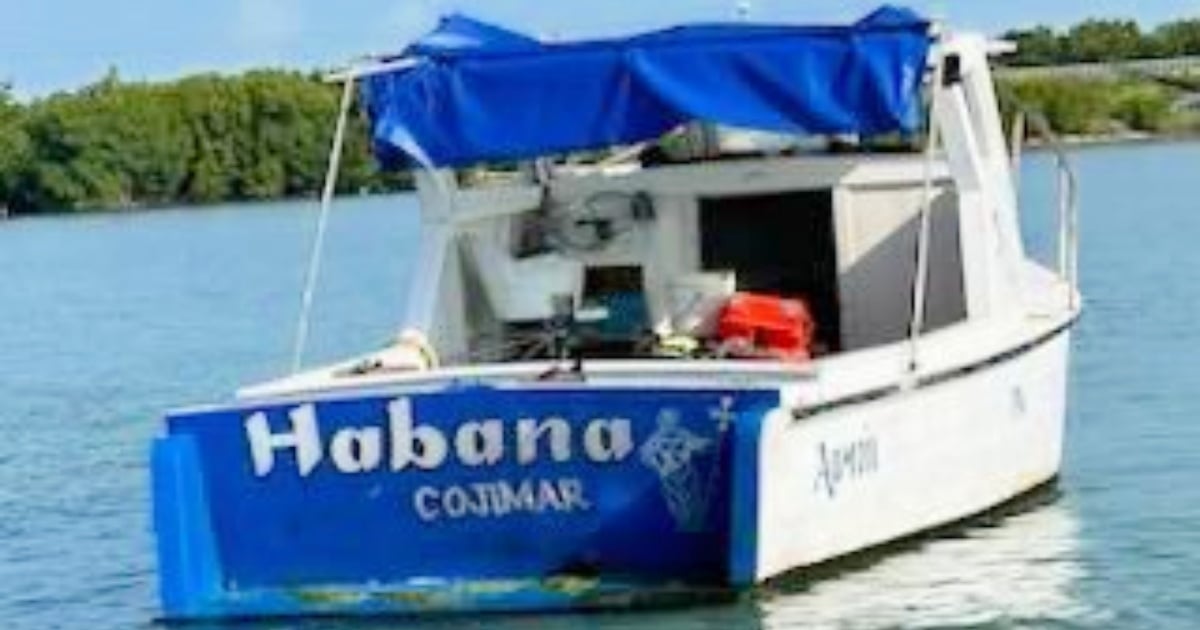A group of 23 Cuban migrants, including three minors, were detained by the U.S. Border Patrol after landing in the Florida Keys, according to social media reports. "Early this morning, U.S. Border Patrol agents along with partner agencies responded to a migrant landing in the Florida Keys and found 21 Cuban migrants (18 adults, 3 minors) who arrived in a wooden fishing boat," wrote Andrew Scharnweber of the Miami Sector U.S. Border Patrol on X.
Scharnweber did not specify which key the Cubans were detained on, but he did share a photo showing that the vessel was a white and blue fishing boat with the words "Habana" and "Cojímar" written in large letters on the stern, along with a drawing of the Giraldilla. The boat closely resembles the Argos, which has previously reached Florida waters.
The influx of Cubans heading to the United States, whether by sea or land, shows no signs of abating. However, the U.S. government continues to assert that all individuals attempting or arriving illegally by sea will not be allowed to remain in the country and will be processed according to U.S. laws and policies, and returned to their country of origin or departure.
For migrants who arrive by sea and are detained by the Border Patrol after reaching U.S. soil, they are processed to be returned to their home country by the Immigration and Customs Enforcement (ICE) and the Office of Detention and Removal Operations (ERO), with a prohibition on legal reentry to the country for five years.
Despite authorities' attempts to deter Cuban rafters, illegal maritime migration remains a viable option for those desperate to leave the country with no other means to do so. In early July, the U.S. Coast Guard explained how they search for migrant vessels in the waters of the Florida Strait.
U.S. Coast Guard's Vigilance in the Florida Strait
The program Voice of America joined one of the USCG's surveillance planes and showed how waters between Cuba and southern Florida are patrolled daily in search of migrants attempting to enter the United States irregularly. Coast Guard officials noted in the report that they try to locate unsafe vessels loaded with migrants attempting to reach U.S. shores through an extremely dangerous sea, as the Strait is 150 km wide at its narrowest point and 1,800 meters deep.
They explained that they look for a unique profile that stands out from a cruise ship or recreational vessel, something that appears to be a very rustic boat. Technicians also use specialized radars and night vision infrared sensors to spot these vessels.
Common Questions About Cuban Migrants Arriving by Sea
Given the ongoing situation with Cuban migrants arriving in the U.S. by sea, here are some frequently asked questions and their answers to provide clarity on the matter.
What happens to Cuban migrants detained by the U.S. Border Patrol?
Cuban migrants detained by the U.S. Border Patrol are processed by ICE and ERO for return to their country of origin, with a prohibition on legal reentry to the U.S. for five years.
How does the U.S. Coast Guard identify migrant vessels in the Florida Strait?
The U.S. Coast Guard uses specialized radars and night vision infrared sensors to locate unsafe, rustic vessels that stand out from cruise ships or recreational boats.
Why do Cuban migrants continue to risk the dangerous journey by sea?
Many Cuban migrants are desperate to leave their country and see maritime migration as their only viable option despite the risks and the U.S. government's attempts to deter such journeys.
